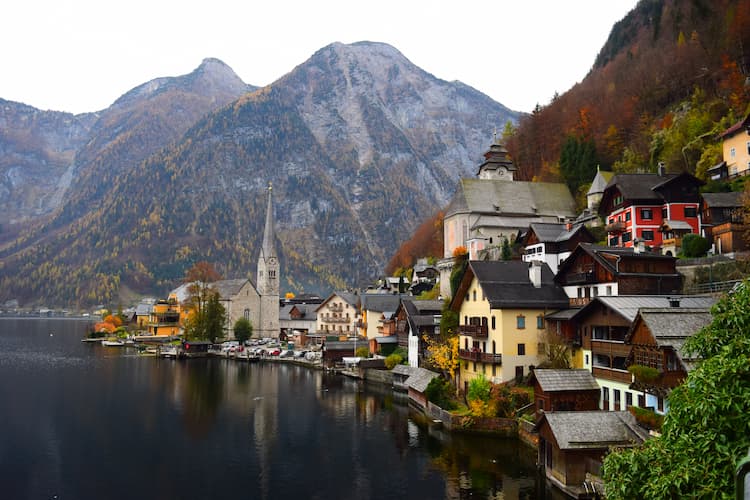
Go World Travel is reader-supported and may earn a commission from purchases made through links in this piece.
My job is to monitor natural disasters, keep tabs on military troop movements, and track disease outbreaks so travelers know when and where they can travel without trouble. The pressing question today is whether the war in Ukraine is reason enough to ground European vacations this summer and fall.
Just when pandemic fatigue was finally outweighing international travel fears, the war sparked a new cause for travel pause. As a travel intelligence analyst, I’m one of the few who “run the watch.”
“The Global Rescue watch monitors round-the-clock, developing international situations and risks that could affect travel plans,” said Kent Webber, senior manager of Intelligence Products & Services at Global Rescue and the former senior intelligence operations officer in the Office of the Under Secretary of Defense for Intelligence, United States Pentagon. “That involves ‘scraping’ the web for any and all breaking news, as well as soliciting input from established on-the-ground contacts.”
Based on the intel we dig up, digest, and disseminate to travelers multiple times a day, here’s what you should know.

Don’t Let the War Stop Your Travel to Europe
Keep your itinerary if you have a trip planned for Western European countries, such as Portugal, Spain, France, the U.K., Italy or Germany, which are thousands of miles from the war zone. Yes, there are a few areas in parts of Central and Eastern Europe you should avoid right now, but most places are free of major risks related to the war in Ukraine.
It was rational to be worried about general travel to Eastern and Central Europe when the war first broke out. But we have a better sense of dangers now and our intel says the war is confined to Ukraine and its borders.
European Countries or Areas That Are Concerning
I feel fine going to countries abutting western Ukraine, like Poland, Slovakia or Moldova, but I would stay at least 50 to 100 miles away from the border.
Travelers should avoid Transnistria and Belarus. Transnistria, a Russian-backed breakaway territory in Moldova bordering Ukraine, saw unexplained and unclaimed explosions in late April, which were likely false flag attacks by Russia to draw Moldova into the war in Ukraine. As for Belarus, there has been political unrest since the 2020 election and it’s now a staging area for Russian troops and military hardware.
“We are also seeing pro-Russian protests sporadically in places like Bulgaria, Hungary, Serbia, Estonia and Moldova,” said Josh Hennessy, a fellow Global Rescue intelligence analyst who previously worked in intelligence at the Institute for the Study of War. “That presents a potential risk to American travelers, as you do not want to wander into one of these protests unexpectedly.”

Is Fallout from War-Damaged Nuclear Reactors A Worry?
At the start of the war, it was a concern when Russian troops took over the Chernobyl and Zaporizhzhia nuclear power plants. Russia was firing near these facilities and preventing workers from maintaining normal shift protocols to keep the reactors safe. But that concern has passed and experts agree it no longer warrants cancelling travel to Europe.
Other Ways the War is Affecting International Travel
“Countries like Poland and Hungary have elevated traffic and security measures in place given the high number of refugees. We haven’t heard any reports of major incidents, but this could affect the ease of travel,” said Hennessy.
The Russian airspace closures also mean flights to Asia from Europe will take longer due to rerouting. These new route flights are probably more expensive due to refueling, extended flight time and other variables.

Travel Protection with Evacuation Services is Essential
“Travel anywhere has risks — even traveling to a nearby city,” said Hennessy. “Whether you’re traveling near or abroad, be prepared with a contingency plan, including having evacuation services tapped for a speedy departure should you experience a medical or security emergency.”
Inspire your next adventure with our articles below:
Author Bio: Paisley Turner is a travel intelligence analyst at Global Rescue, the leading provider of medical, security, evacuation and travel risk management services. As a world-traveler with a dual citizenship in the U.S. and U.K., she has also lived in Russia and worked at the Institute for the Study of War on their Russia team.
- What It’s Like to Live as an Expat: Lake Chapala, Mexico - April 18, 2024
- Top 5 Spots for Stargazing in North Carolina - April 17, 2024
- The Low-Key Magic of Ghent, Belgium - April 17, 2024

